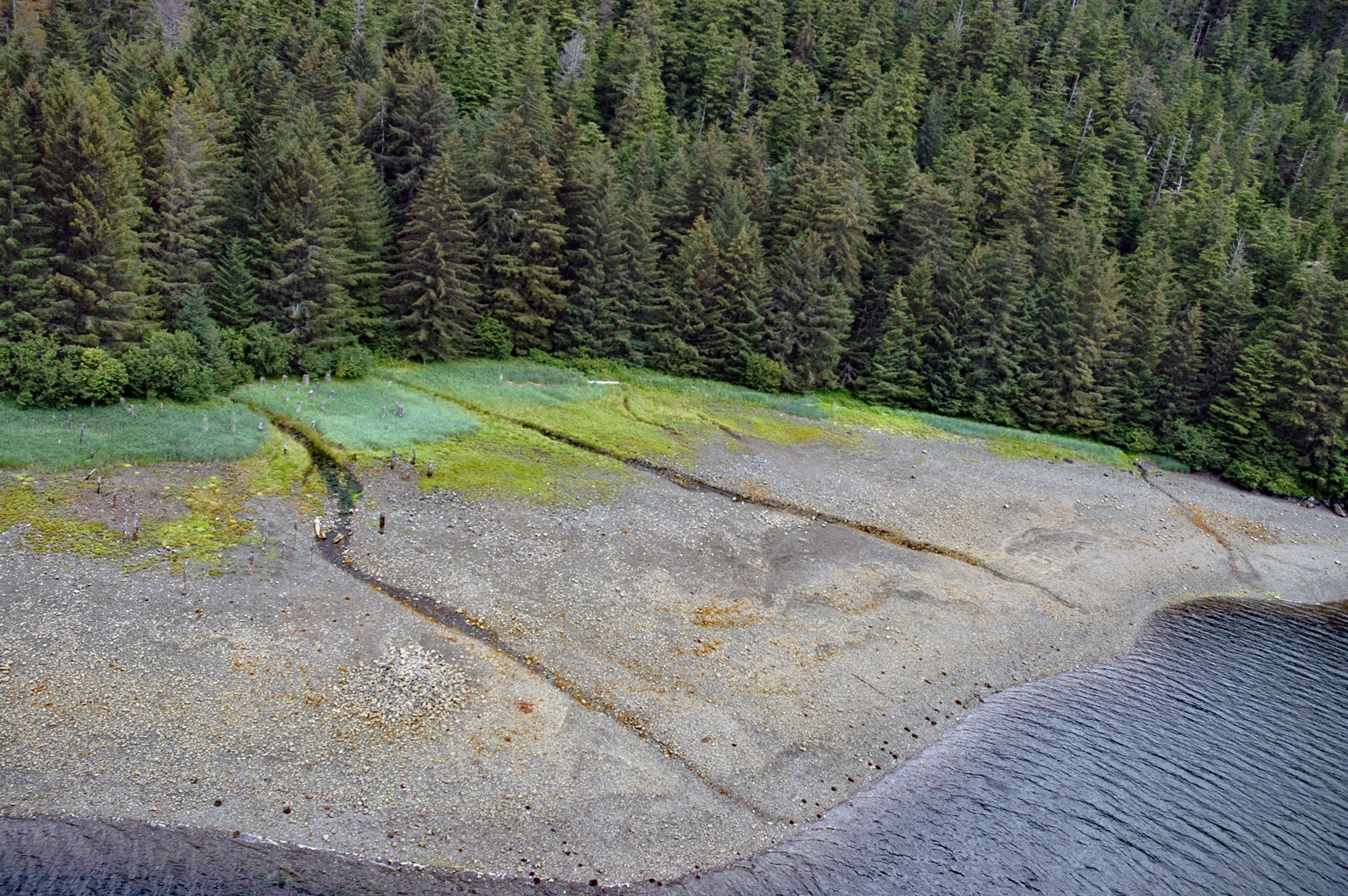Ford Arm is an embayment about 0.3 miles (483 m) across and 4 miles (6.5 km) long, on the west coast of Chichagof Island, about 44 miles (71 km) north-northwest of Sitka and 28 miles (44 km) south-southeast of Pelican, Alaska. Ford Arm was named in 1897 by Lieutenant Commander Edwin K. Moore of the U.S. Navy for yeoman Harry L. Ford, while both served on the U.S. Coast and Geodetic Survey ship Carlile P. Patterson. The name was first published in the 1901 Coast Pilot for Southeast Alaska. Chichagof Island is situated in the Alexander Archipelago and has a land area of 1.3 million acres (530,587 ha) and a coastline of 742 miles (1,197 km). The principal communities are Hoonah, Pelican, Tenakee Springs, and Elfin Cove. In the late 1800s, thousands of prospectors combed the valleys and mountainsides of Chichagof Island looking for gold. From the discovery of gold in 1905 through 1938 the mining district produced about 16 million dollars worth of gold and silver, practically all of which came from the Chichagof and the Hirst Chichagof mines. The western coast of Chichagof Island is part of the Chugach terrane, now also called the Southern Margin composite terrane, which began accreting along the western edge of North America during the Late Cretaceous, or around 230 million years ago. This accretionary wedge is highly fractured by fault shears and intensely metamorphosed by magma intrusions of the Triassic age and others probably of the Early Cretaceous age. The rocks on the eastern shore of Ford Arm are mostly volcanic and metavolcanic gold-bearing greenstone, greenschist, greywacke, marble, and chert. Glaciation has been the most significant factor in modifying the landscape of Chichagof Island, but only a few small cirque glaciers remain today. During the Pleistocene, or 2.5 million to 12,000 years ago, an ice sheet from the north and northeast covered all but the highest elevations of the islands and is evident in the present-day landscape with many cirques, horns, and aretes.
The first archaeological evidence of human occupation dates from a people that inhabited the area from about 10,000 to 4,500 years ago, used boats to travel among the islands, and focused their food gathering efforts on intertidal and near-shore resources with fishing and shellfish harvests being the subsistence mainstay. About 4,500 years ago, a different culture or adaptation emerged that utilized salmon as a principal food source, and fish weirs and woven nets or baskets were used to catch fish in large quantities. By around 2,000 years ago, this culture had developed an intricate social structure of tribal clans consisting of family houses. The clans and houses were the units that possessed territories, including rights to all game, fish, berries, timber, drinking water, trade routes, house sites, as well as songs, dances, stories, totemic crests, and all the privileges and authority that went with them. The clan and house leaders could assign fishing spots, open and close hunting seasons, adjudicate the laws and oversee ceremonies. The western coast of Chichagof Island is the traditional territory of the Sheet’ká Kwáan or Sitka Tlingit who, like most other Pacific Northwest peoples, had an annual cycle of subsistence activities. In the spring, people were in their winter villages and ventured out to hunt brown bears and small fur-bearing mammals, and fish for halibut, cod, red snapper, and king salmon in deeper waters. With the onset of summer, clan and house groups moved to their seasonal fish camps throughout their traditional territory and they stayed at these encampments until about September catching and curing salmon and gathering a wide variety of berries and other plants. This traditionally was also the season of travel, trade, warfare, and slave raids. Fall was the time for returning to the winter village. Some, before going to the winter village, went to the mountains to hunt bears and deer, this being the time these animals were at their fattest. This changed with the arrival of Europeans, the maritime fur trade, and industrial-scale fishing to supply canneries that proliferated immediately following the Alaska Purchase in 1867.
The first cannery in Alaska was built at Klawock in 1878, and the first cannery in Sitka started later that same season. By 1889, there were already 13 canneries in southeastern Alaska. The primary methods for catching fish for canning were fish traps and purse seines. Early seining was done with large rowboats, which were usually supplied by the canneries, and the fish were carried on small steam-power vessels to the cannery. These early seine boats were large flat-bottomed open boats, propelled by oars, and nets were pulled by hand. Engines were introduced to seine boats soon after the turn of the century, and these could catch more fish with less effort, and soon all the seiners had engines. In 1912, T.C. McHugh of Wrangell, who was associated with Pillar Bay Packing Company, partnered with August Buschmann to build a cannery in Ford Arm, and the Deep Sea Salmon Company operated it. Operating exclusively with seines, they packed about 20,000 cases of salmon, with 48 one-pound cans per case. The period just before and during World War I saw a rapid expansion of the salmon industry when 36 new canneries were built between 1915 and 1918. Buschmann and McHugh incorporated the Deep Sea Salmon Company in 1918 and started another cannery at Port Althorp. In 1921, the company leased the cannery at Ford Arm to the Great Atlantic and Pacific Tea Company and they operated the facility until 1924 when the lease was not renewed. The cannery was then sold to Pyramid Packing Company in Sitka and it was dismantled and all that remains today are remnants of the dock piles. Read more here and here. Explore more of Ford Arm and Chichagof Island here:

